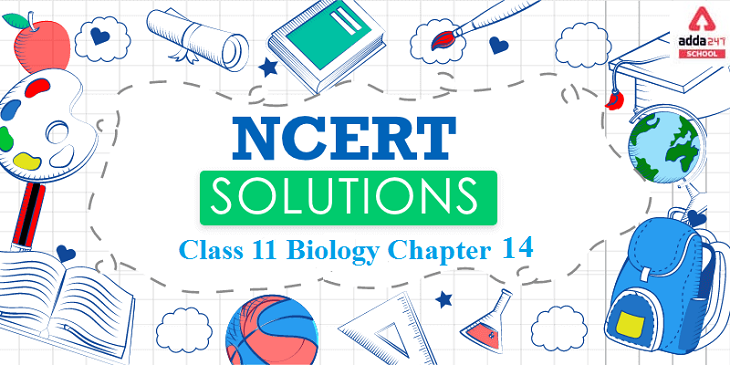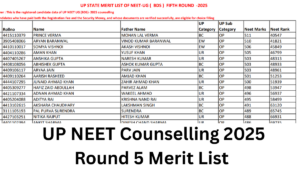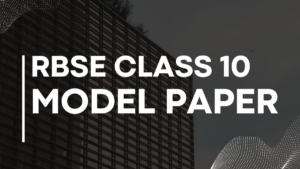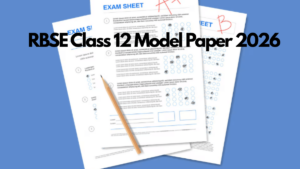Ncert Solutions For Class 11 Biology Chapter 14
Class 11 Biology NCERT Solutions: Adda 247 provides NCERT Solutions for Class 11 Biology which is for the students who want to go ahead in life and achieve great marks in their examinations. The NCERT Solutions for class 11 are provided by the teachers who are experts of their subjects. The solutions are set according to the rules formulated by the NCERT class 11 biology and in the language that can be understood by every student. By these reading the solutions students can build up a strong base easily. The NCERT class 11 Biology solutions covers the chapters 1 to 22 with the important questions and the answers in a detailed way.
Examinations can be threatening for some people, a proper learning of the concepts is the key to crack the examination. Students rely on the solutions of the NCERT provided by Adda 247. The solutions are formulated by the experts of the subjects who have tremendous knowledge in their subjects.
These NCERT Solutions of class 11 help the students to get familiarized with the textbooks. The students can access the solutions anywhere while browsing the web easily. The solutions are very precise and accurate.
NCERT Solutions for Class 11 Biology Chapter 14 –Respiration in Plants
The chapter provides information about Respiration in plants. The process of respiration in plants involves using the sugars produced during photosynthesis plus oxygen to produce energy for plant growth. In many ways, respiration is the opposite of photosynthesis. In the natural environment, plants produce their own food to survive.
They use the carbon dioxide (CO2) from the environment to produce sugars and oxygen (O2), which can later be utilized as a source of energy. While photosynthesis takes place in the leaves and stems only, respiration occurs in the leaves, stems and roots of the plant. The process of respiration is represented as follows:
C6H12O6 + 6O2 → 6CO2 + 6H2O + 32 ATP (energy)
As with photosynthesis, plants get oxygen from the air through the stomata. Respiration takes place in the mitochondria of the cell in the presence of oxygen, which is called “aerobic respiration”. In plants, there are two types of respiration: dark respiration and photo respiration. The first kind occurs in the presence or absence of light, while the second occurs exclusively in the presence of light.
[sso_enhancement_lead_form_manual title=”Download Full PDF of Class 11 Biology Chapter 14 ” button =”Download Now” pdf =”/jobs/wp-content/uploads/2021/06/18144350/English-chapter-14.pdf”]
Features of the NCERT Solutions for Class 11 Biology Chapter 14 –Respiration in Plants
NCERT Solutions of class 11 have been answered based on the important information on the question.
- The columns are used wherever necessary.
- Solutions are solved point-wise and accurately answered point to point.
NCERT Solutions for Class 11 Biology Chapter 14 Respiration in Plants
Question 1. Differentiate between
(a) Respiration and Combustion
(b) Glycolysis and Krebs’ cycle
(c) Aerobic respiration and Fermentation
Answer:
(a) Respiration and combustion
| Respiration | Combustion |
| Respiration is a process in which breaking down of C-C bonds of the complex compounds takes place through oxidation in cells order to release energy. | Combustion is process in which substance reacts with oxygen present in the air and liberate the energy to the surroundings in form of heat and light. |
| It is a biochemical process. | It is a physio-chemical process. |
| ATP in form of energy is produced at the end of the reaction. | No energy is produced at the end of the reaction. |
| It is an enzyme driven process as it is a biological process. | It does not require enzymes as it is a physical process. |
| It is a slow process. | It is a quick reaction. |
(b) Glycolysis and Kreb’s cycle
| Glycolysis | Kreb’s cycle |
| Glycolysis is the process of breakdown of glucose(6C) to produce 3C pyruvic acid and energy is glycolysis. | Kreb’s cycle is the series of the reactions which occurs during the aerobic respiration to produce carbon dioxide and and energy. |
| It occurs in the “cytoplasm” of the cell. | It occurs in the “mitochondrial matrix” of the cell |
| It is a common step in both aerobic and anaerobic respiration. | It occurs only in aerobic respiration.
|
| It is a catabolic reaction. | It is an amphibolic reaction. |
(c) Aerobic respiration and fermentation
| Aerobic respiration | Fermentation |
| Aerobic respiration is the process in which complete oxidation of organic substances in the presence of oxygen, to release CO2, water and a large amount of energy stored in the substrate. | Fermentation is a process in which breakdown of sugar occurs by the microorganism in the absence of oxygen to produce ethanol. |
| Complete breakdown of glucose occurs in aerobic respiration. | Partial breakdown of glucose occurs in fermentation. |
| Net gain in aerobic respiration is 38 ATP | Net gain in fermentation is 2ATP. |
| Oxidation of NADH to NAD+ is very quick and vigorous in aerobic respiration. | Slow oxidation of NADH to NAD+ occurs in fermentation. |
Question 4. What are the main steps in aerobic respiration? Where does it take place?
Answer: The main steps of aerobic respiration are as follows:
1. Glycolysis- Cytoplasm
2. Krebs cycle- Matrix of mitochondria
3. Electron transport system- Inner mitochondrial membrane
4. Oxidative phosphorylation- Oxysome in the inner mitochondrial membrane.
Question 6. Explain ETS.
Answer: Electron transport system (ETS) is the metabolic pathway through which the electron passes from one carrier to another. It is located in the inner mitochondrial membrane.
(i) Electrons from NADH that produced in the mitochondrial matrix during citric acid cycle, are oxidized by an NADH dehydrogenase (Complex I). These electrons are then transferred to ubiquinone which is located within the inner membrane.
(ii) Ubiquinone also receives reducing equivalents via FADH2 (Complex II). FADH2 is generated during oxidation of succinate in the citric acid cycle.
(iii) The reduced ubiquinone (ubiquinol) is then oxidised with the transfer of electrons to cytochrome-c via cytochrome-bc1 complex (complex III).
(iv) The outer surface of the inner membrane has a small protein, cytochrome-c attached to it that acts as a mobile carrier for transfer of electrons between complex III and IV.
(v) Complex IV refers to cytochrome c oxidase complex containing cytochromes a and a3, along with two copper centres.
(vi) When the electrons pass from one carrier to another via complex I to IV in the electron transport chain, they are coupled to ATP synthase (complex V). This coupling is necessary for the production of ATP from ADP and inorganic phosphate. The amount of ATP produced depends on the molecule, which has been oxidised.
Question 7. Distinguish between the following:
(a) Aerobic respiration and Anaerobic respiration
(b) Glycolysis and Fermentation
(c) Glycolysis and Citric acid Cycle
Answer:
- a) Aerobic respiration and Anaerobic respiration
| Aerobic respiration | Anaerobic respiration |
| It uses oxygen for deriving energy. | It occurs in the absence of oxygen. |
| It occurs in cytoplasm and mitochondria. | It occurs in cytoplasm. |
| The end products of aerobic respiration are carbon dioxide and water. | The end products of fermentation are ethyl alcohol and carbon-dioxide. |
| Complete oxidation of respiratory substrate takes place. | Incomplete oxidation of respiratory substrate takes place. |
| 36-38 ATP molecules are produced. | Only 2 ATP molecules are produced. |
(b) Glycolysis and Fermentation
| Glycolysis | Fermentation |
| Glycolysis occurs during aerobic and anaerobic respiration. | Fermentation is a type of anaerobic respiration. |
| Pyruvic acid is produced as its end product. | Ethanol or lactic acid is produced as its end product. |
(c) Glycolysis and citric acid cycle
| Glycolysis | Citric acid cycle |
| It is a linear pathway. | It is a cyclic pathway. |
| It occurs in the cell cytoplasm. | It occurs in the mitochondrial matrix. |
| It occurs in both aerobic and anaerobic respiration. | It occurs in aerobic respiration. |
| One glucose molecule breaks down to generate 2 NADH2and 2 ATP molecules. | It produces 6 NADH2, 2 FADH2, and 2 ATP molecules on breakdown of two acetyl-coA molecules. |
Question 8. What are the assumptions made during the calculation of net gain of ATP?
Answer: The calculations of net gain of ATP can be made only on certain assumptions
(i) There is a sequential, orderly pathway functioning, with one substrate forming the next and with glycolysis, TCA cycle and ETS pathway following one after another.
(ii) The NADH synthesised in glycolysis is transferred into the mitochondria and undergoes oxidative phosphorylation.
(iii) None of the intermediates in the pathway are utilized to synthesise any other compound.
(iv) Only glucose is being respired-no other alternative substrates are entering in the pathway at any of
the intermediary stages. But this kind of assumptions are not really valid in a living system. All
pathways work simultaneously and do not take place one after another. Substrates enter the pathways
and are withdrawn from it as and when necessary; ATP is utilized as and when needed; enzymatic rates
are controlled by multiple means. In overall steps, there is a net gain of 36 ATP molecules during
aerobic respiration of one molecule of glucose.
Question 9. Discuss “The respiratory pathway is an amphibolic pathway.”
Answer: The respiratory pathway is an amphibolic pathway
An amphibolic pathway refers to a pathway in which both catabolic and anabolic reactions take place. The products of some reactions are used to synthesise other products. Carbohydrates are broken down to glucose before entering respiratory pathways. Fats get converted into fatty acids and glycerol whereas fatty acids get converted into acetyl CoA before entering the respiration. In a similar manner, proteins are converted into amino acids, which enter respiration after deamination. During the synthesis of fatty acids, acetyl CoA is withdrawn from the respiratory pathway. Also, in the synthesis of proteins, respiratory substrates get withdrawn. Thus, respiration involves both anabolism and catabolism in anabolism. Therefore, respiration can be termed as an amphibolic pathway as it involves both anabolism and catabolism.
Question 10. Define RQ. What is its value for fats?
Answer: RQ is respiratory quotient or respiratory ratio. It is defined as the ratio of the volume of CO2 evolved to the volume of O2 consumed during respiration. The value of respiratory quotient depends on the type of respiratory substrate. Its value is one for carbohydrates. However, it is always less than one for fats as fats consume more oxygen for respiration than carbohydrates.
It can be illustrated through the example of tripalmitin fatty acid, which consumes 145 molecules of O2 for respiration while 102 molecules of CO2 are evolved. The RQ value for tripalmitin is 0.7.
Question 11. What is oxidative phosphorylation?
Answer: The transfer of electrons from reduced coenzyme NADH to oxygen via complexes I to IV is coupled to the synthesis of ATP from ADP and inorganic phosphate (Pi) which is called Oxidative phosphorylation.









 UP NEET Counselling 2025 Round 5 Merit L...
UP NEET Counselling 2025 Round 5 Merit L...
 RBSE Class 10 Model Paper 2026 Out, Down...
RBSE Class 10 Model Paper 2026 Out, Down...
 RBSE Class 12 Model Paper 2026 for Arts,...
RBSE Class 12 Model Paper 2026 for Arts,...














